|
ca 1918:
This outfit
carries the unusual name of Blighty, a British term that came into
common use as a fond nickname for Britain at the beginning of the
First World War. It was coined by British soldiers fighting in
France about 1915, and turns up in popular songs of the day, such as
There’s a ship that’s bound for Blighty, We wish we
were in Blighty, and Take me back to dear old Blighty.
The use of the term as a brand name
for Christmas lights is a mystery to this collector. Although the
box states that the name is a registered trademark, no records of
the registration can be found. Also unusual are the facts that the
outfit is in a smaller box than others of its time, and the labeling
for the product is found on the inside
of the box lid. The festoon is an example of the early use of
composition material for the
sockets. Composition was just beginning to
be used during this time, proving itself to be a better product for
socket material than porcelain or ceramic. It was lighter and far
less brittle, and held up better during the decorating process. The
set has a black and white porcelain screw type plug, and features
American made painted carbon filament lamps. The lithography on the
outside of the box is of very high quality.
|
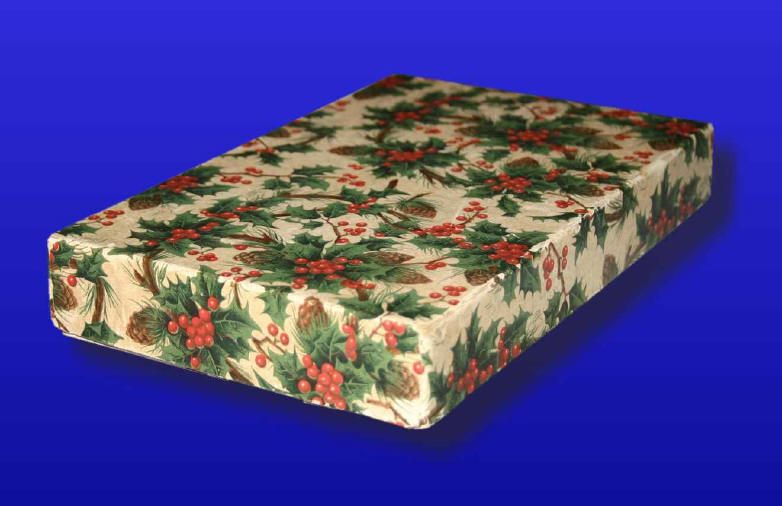 |
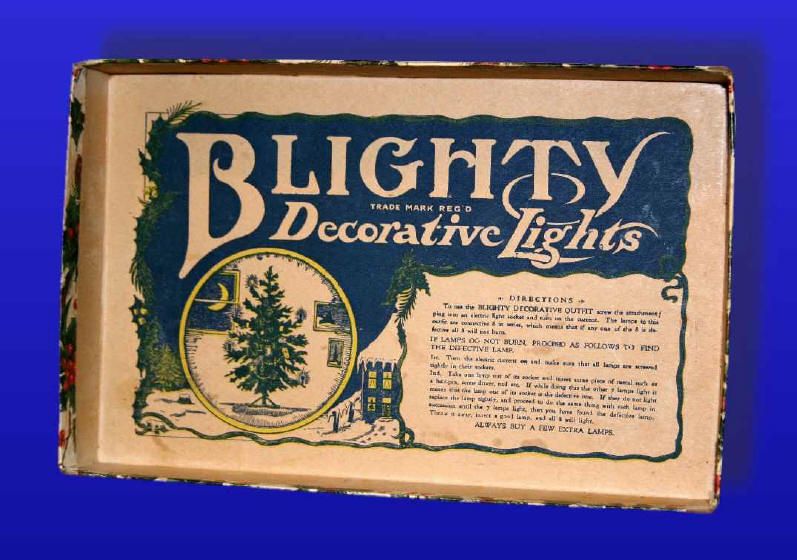 |
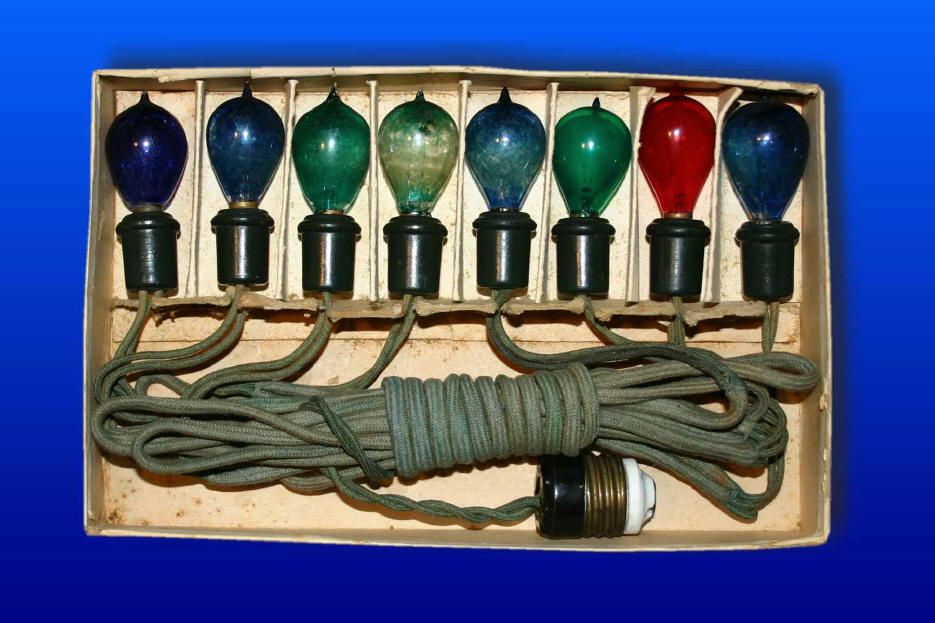 |
|
ca 1918:
This outfit from Zelco includes
round tungsten lamps that have been dipped in colored lacquer. This
coloring method was sometimes used on early Christmas light bulbs, but was
not the most effective, for as the lamps went through repeated
hot/cold cycles during use, the lacquer dried out, cracked and eventually flaked off.
Inside the box shows the unusual end-of-cord connector. Although appearing on the surface to be typical of the
times, this connector and festoon are rated for only 32 volts, indicating
that this is a farm or "Delco" outfit. Some homes in rural areas, or homes
located in city areas not yet hooked up to the local power supply, would
sometimes utilize home generators. By far the most popular brand of these
was Delco, hence the name for the set. Few of these sets survive in
working condition, as uninformed later owners would plug these into 110
volt outfits, causing instant destruction. This outfit has survived the
years unscathed, and still works perfectly. Editor's Note:
Web site visitor Lu Green
recently wrote to this collector, telling of a Delco generator system his
parents had. Lu writes:
A friend
passed your site on to me. I found the Delco 32VDC lights very
interesting as my father and mother had two Delco generators in the
basement each with it's bank of batteries on a wooden support bench built
like stairs in an ascending set of rows. Mom told me that they
had lights, a radio, a toaster, and I think a vacuum cleaner. Each week,
Dad would take a battery (6V) to the barn that had some lights in it to
make up for the line loss and the resulting dim bulbs there. We also had
a 90' wind tower with a 600W generator that never contributed much to the
charging. We used this system until the REA (Ed. Note: Rural Electrical
Association) came through our area and installed AC power delivery lines.
This is in Indianola, Illinois. |
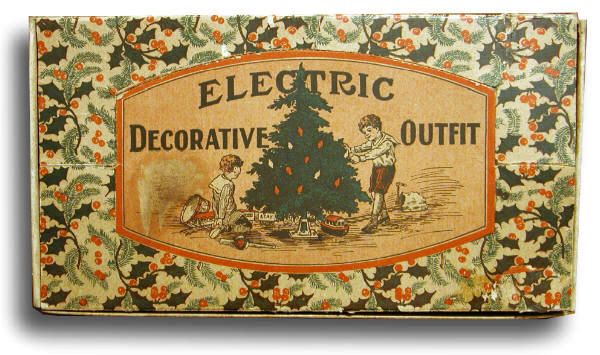 |
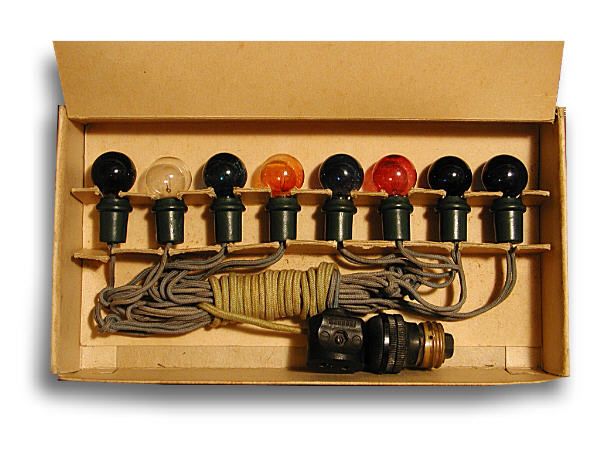 |
| ca 1919:
This set is by The Interstate Electric Novelty
Company, later to become Franco. The box is stamped "Pinecone
Lamps," but the set actually contains a charming mixture of early
figural lights, including pinecones. It is unknown if these lights
are replacements for burnouts, or if the set was actually sold this
way. Many hardware stores offering Christmas lights would also offer
an assortment of replacement lamps, including figurals. Inside the box we see the festoon with
ceramic sockets, and the lights. From left to right these figurals are all
hand painted and consist of a white rose, a purple pine cone (sometimes
referred to as a seed pod), a pecan, a mushroom, a red pine cone, another
flower, an orange pine cone and finally a lemon. Most of these figurals
have the exhaust tip, and most are marked Germany. |
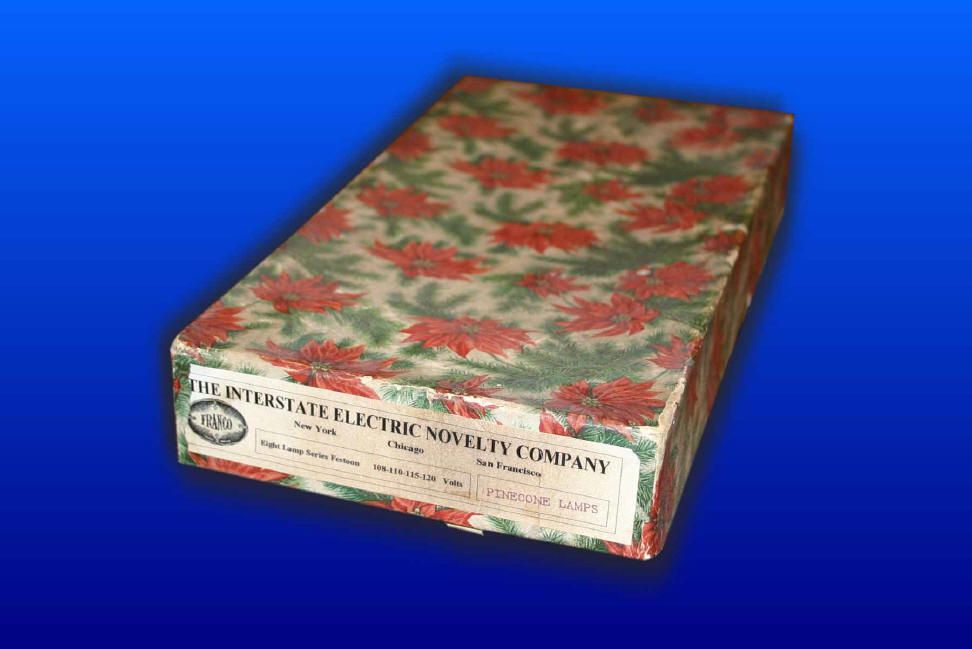 |
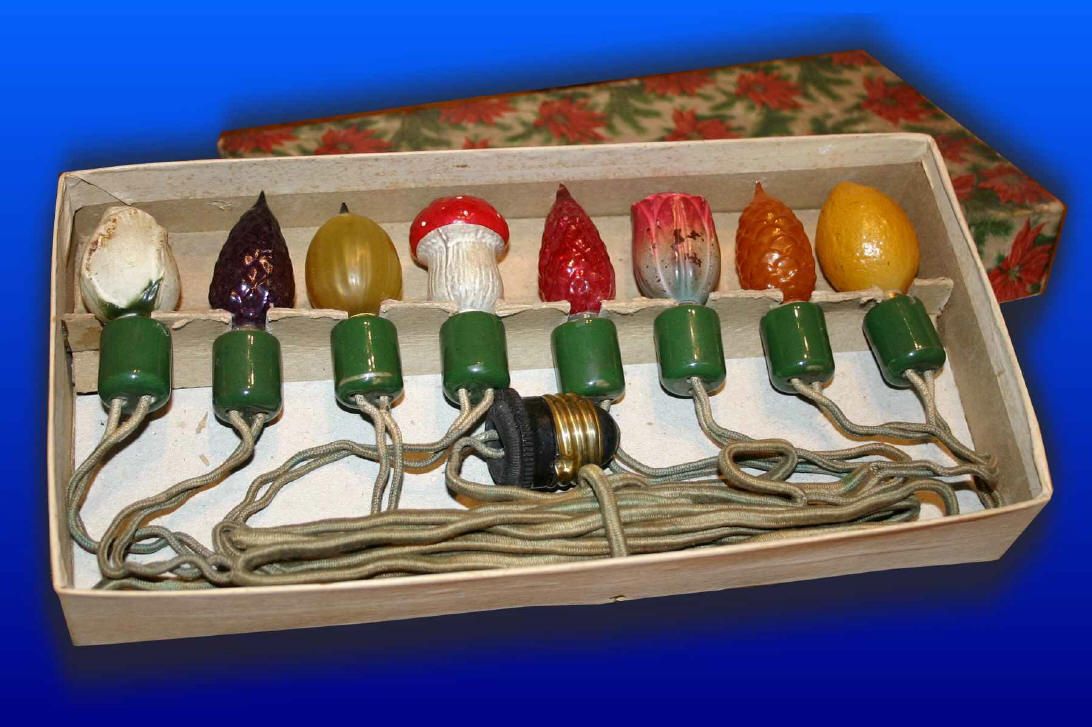 |
| ca 1920:
An outfit by ISCO shows early
composition sockets. The scratches evident on the
sockets indicate that this set was once used with socket
clips, shown here in the far right picture. These clips allowed the socket to be secured to a
tree branch, rather than having to wrap the wire around it. The lamps in
the set are all Japanese true colored glass carbon filament type,
indicating that the outfit was a less costly offering by ISCO. More
expensive outfits would have featured Mazda type tungsten filament
lamps of American manufacture. |
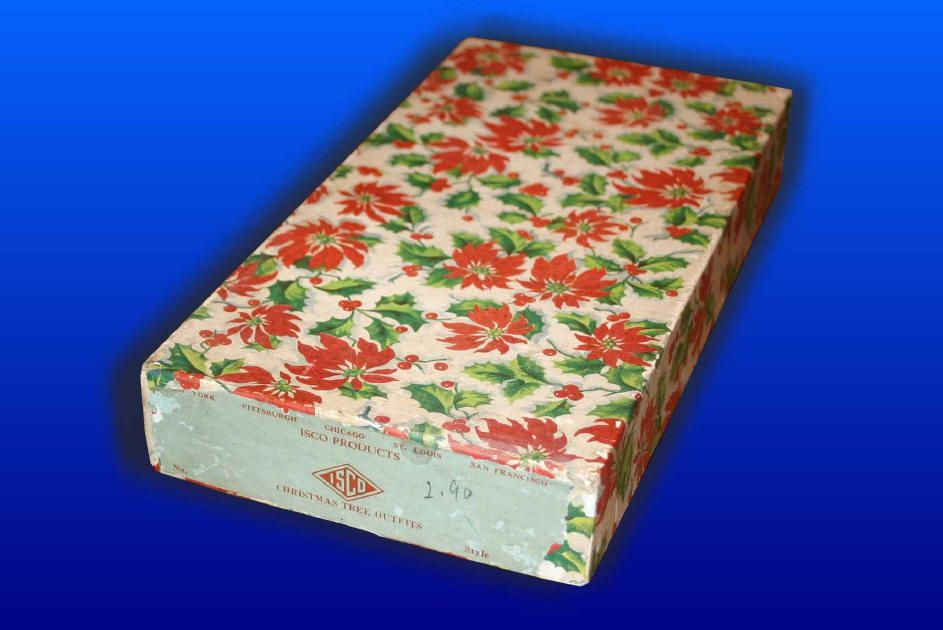 |
 |
 |
|
ca 1920: Another early
outfit featuring composition sockets, this time by the Triangle
Electro Trading Company. The set has a warning within the
instructions not to mix the two currently available types of
Christmas lamps- carbon filament and tungsten filament. Mixing the
two types would have caused premature burnouts due to the differing
electrical characteristics of the two filaments. A view inside the box shows the
composition sockets which appear identical in every way to the ones in the
ISCO set above, with the only difference being the type of screw plug the
cords employ. Both cords have knots in them below each socket, indicating
early manufacture. The knots formed a loop about three inches or so down
from the socket, used to slip over the tree branch to make
positioning the lights a bit easier for the decorator. |
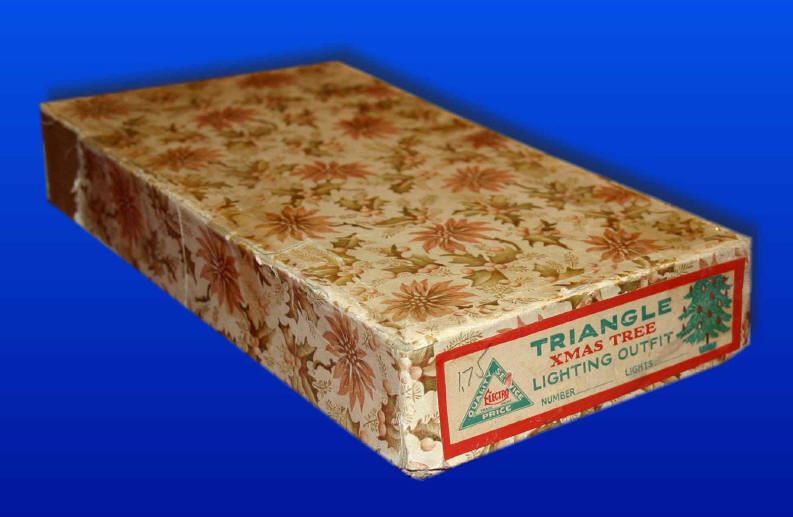 |
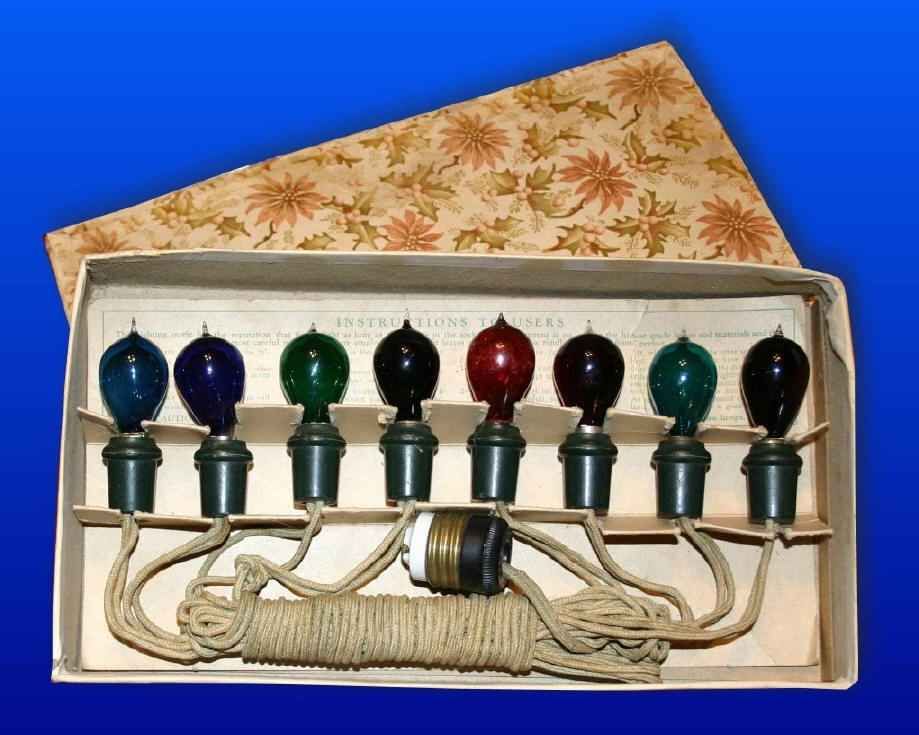 |
|
ca 1920:
This charming little
outfit from the M. Propp company was intended to be powered by
batteries, and was sold to those households not yet wired for
electricity. The lamps are the then brand new 4 volt tungsten
filament cone shape, first offered by General Electric in this year. |
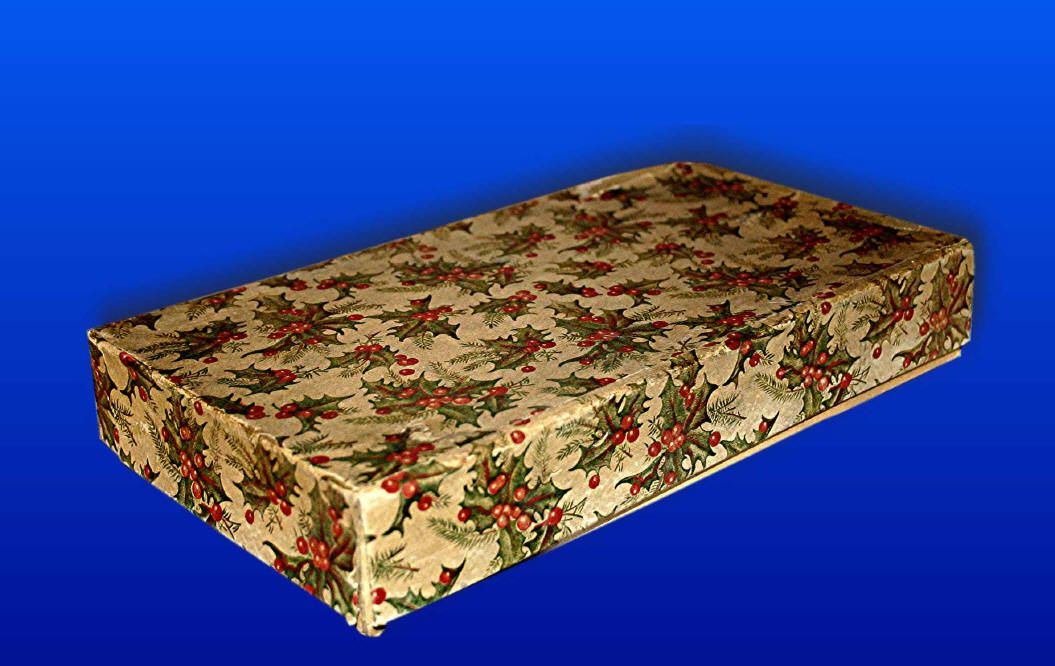 |
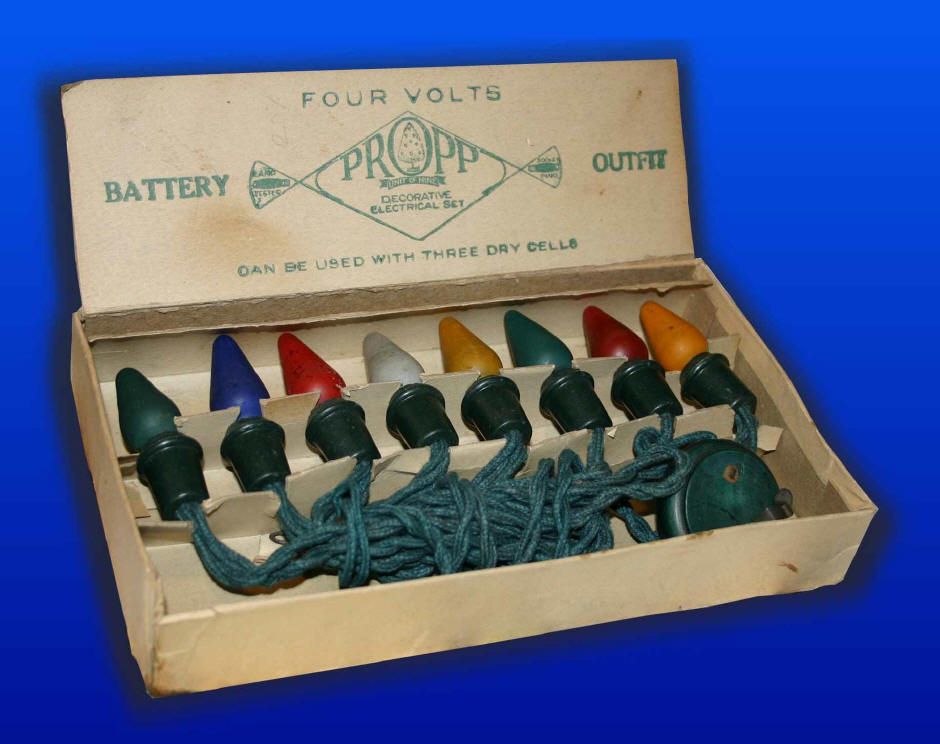 |
| ca 1920:
In a surprisingly plain box, this Monowatt outfit says on the end
label simply: "Decorative Outfit," with no mention of Christmastime
use. The inner flap, however, mentions that the set will "add much
BEAUTY to your Christmas-Tree." On the inside of the flap, we can
see that the bulbs and cord included in the outfit match the
illustration perfectly, giving the collector a rare opportunity to
know for sure that this is the correct festoon for the outfit. The
festoon also includes an early attachment apparatus, allowing one or
more strings to be connected to it. |
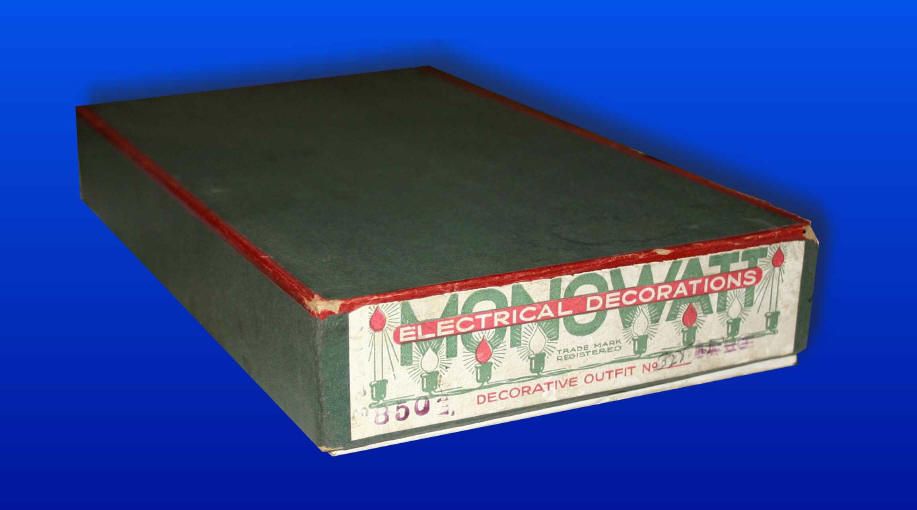 |
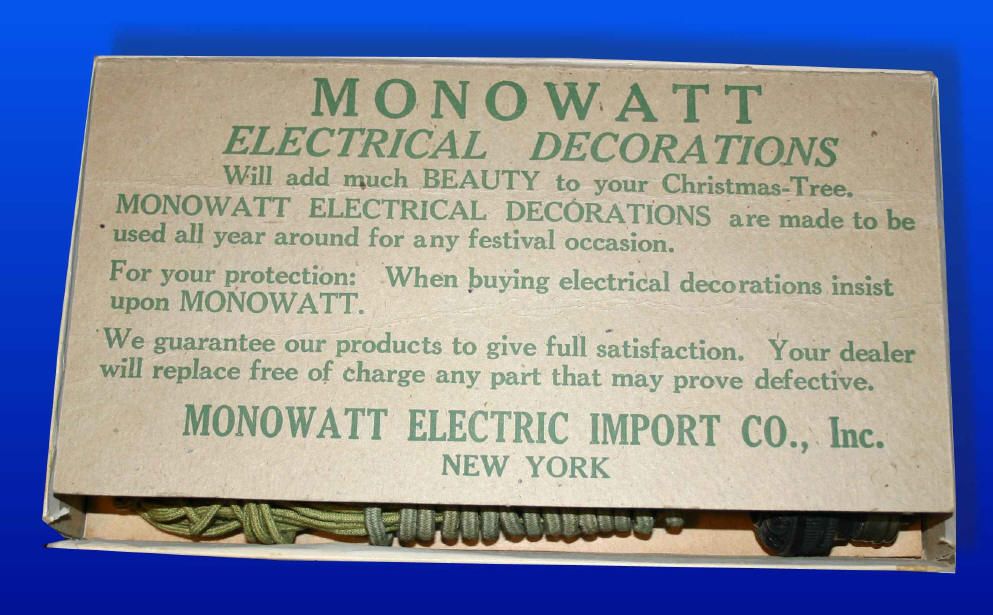 |
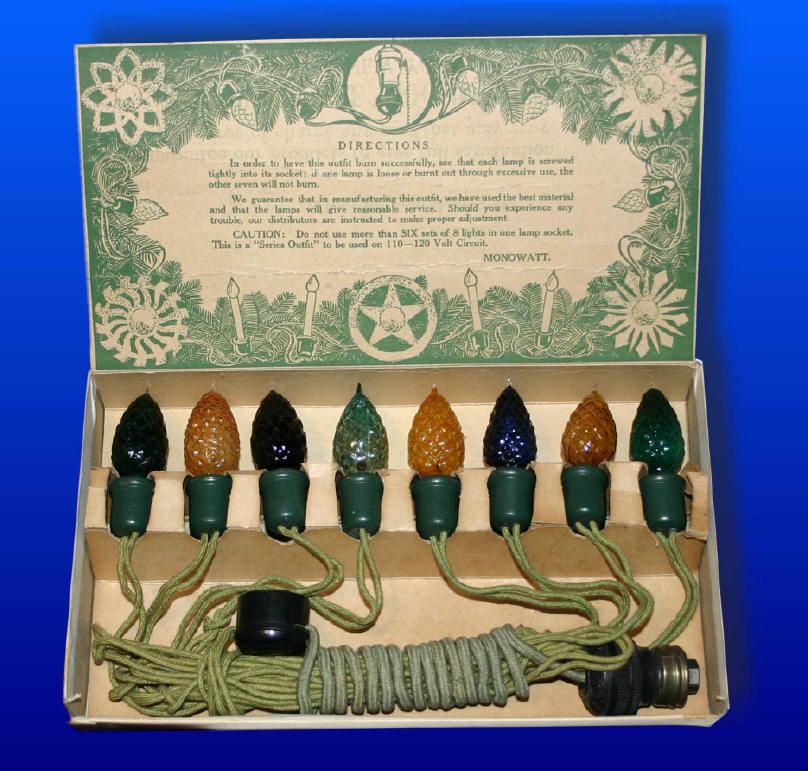 |
|
ca 1920:
A very hard to find outfit,
this offering from The Franco Electric Company has an unusual number
of sockets in its festoon: 10. When run on a typical-for-the-times
110 volt electric circuit, each 15 volt lamp would only receive 11
volts, sharply increasing
bulb life. The downside of this
configuration is the brightness, which would typically be about
two-thirds the brightness of a lamp operated at proper voltage. |
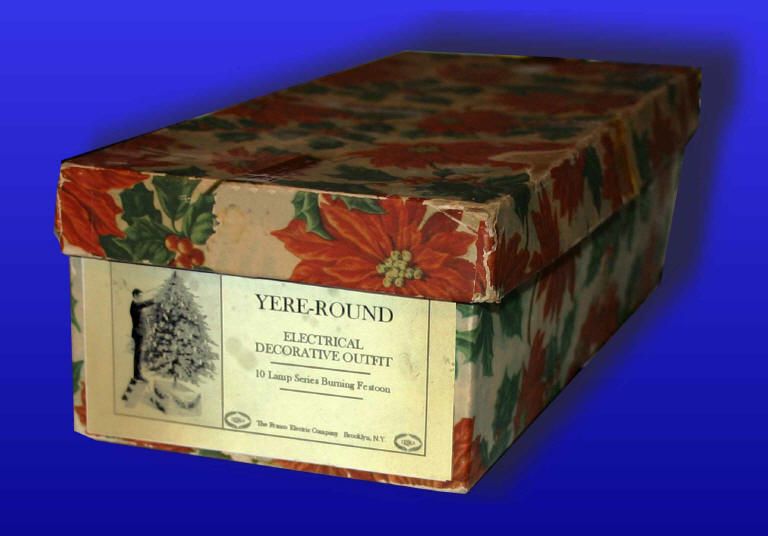
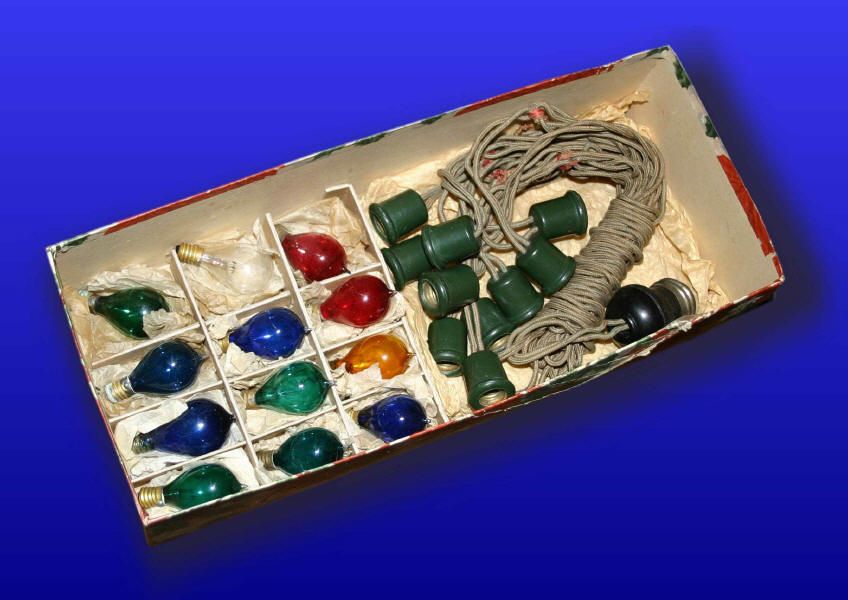 |
Welcome Page
TABLE OF CONTENTS
BACK |

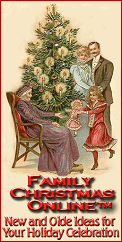
|



































